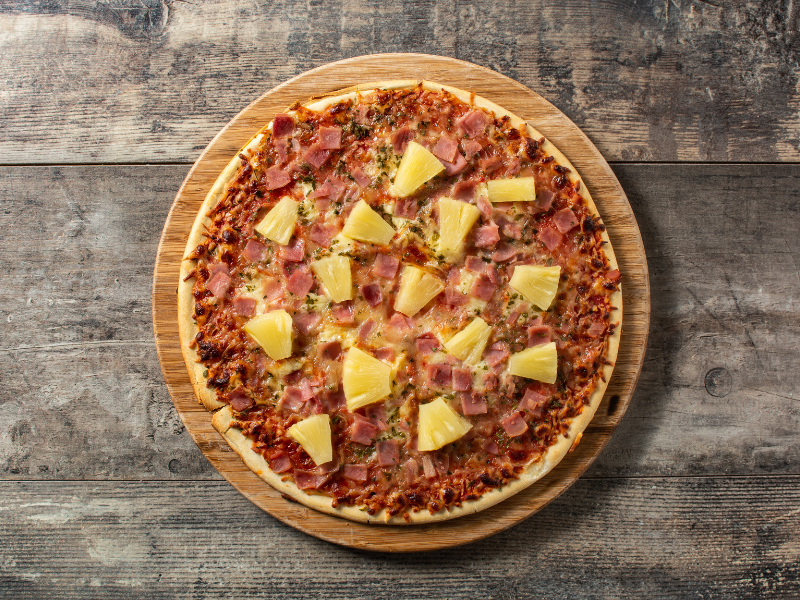Few topics in the culinary arena set off as much passionate argument and debate as pineapple on pizza. This seemingly harmless topping has split foodies in two camps: those that swear by its sweet-Savory charm and those who dismiss it as an affront to pizza tradition. But how did this polarizing combination come about, and why does it continue to stir up such strong opinions? Let’s dive into the history, arguments, and the cultural phenomenon.

The Origins
The credit (or blame, depending on your stance) goes to Sam Panopoulos, a Greek immigrant living in Canada. In 1962, he decided to try canned pineapple as a topping on pizza at his restaurant in Ontario. The result? The iconic Hawaiian pizza, usually topped with pineapple, ham, and mozzarella cheese. Contrary to its name, the pizza has no relation to Hawaii; the name came from the brand of canned pineapple Panopoulos used.
The Case for Pineapple on Pizza
Enthusiasts believe that the sweet flavour of pineapple, when combined with Savory toppings such as ham or bacon, creates a flavour profile that cannot be easily matched. Here are a few reasons fans love it:
- Sweet and Savory Harmony: The contrast between the sweet juiciness of pineapple and the salty tang of cheese and ham makes for a balanced bite.
- Cultural Fusion: Adding pineapple to pizza represents modern food that celebrates creativity, blending Flavors.
- Refreshing Twist: Acid in pineapple cuts through rich cheese and meats, creating an invigorating palate cleanser.

The Case Against Pineapple on Pizza
Purists say pineapple does not belong on pizza. They go on to argue that this can be justified by the following:
- Breaking Tradition: Purists in Italian cuisine will maintain that pizza should retain only traditional toppings such as tomato, mozzarella, and basil.
- Texture Issues: The juiciness will make the crust soggy and change the texture a slice of pizza is expected to have.
- Overpowering flavour: Some people find that pineapple’s sweetness is overpowering, and it takes over all the other Flavors.

The Debate
This debate is more than about food; it’s a cultural phenomenon, expressing personal taste, identity, and even humour. Social media platforms are filled with memes, polls, and heated discussions about whether pineapple belongs on pizza. Celebrities and world leaders have even weighed in on the matter. For example, once the president of Iceland joked about banning this pizza, sparking international headlines.
A Global Perspective
While the debate may be divisive, it has gained popularity worldwide. Hawaiian pizza is on many menus in Australia and Sweden, for instance. In Italy—the country of origin for pizza—pineapple as a topping remains contentious; many pizzerias will not serve it.

Conclusion: To Pineapple or Not to Pineapple?
Whether you’re a fervent supporter or a staunch critic, there’s no denying that pineapple on pizza sparks conversations and brings people together (even if only to argue). Ultimately, food is a deeply personal experience, and what matters most is what tastes good to you.
So, the next time you get into a heated debate, remember: it’s just a slice of fun in the grand tapestry of culinary exploration. Who knows? You may even find a newfound appreciation for this sweet-and-Savory delight-or at least understand why others love it.
